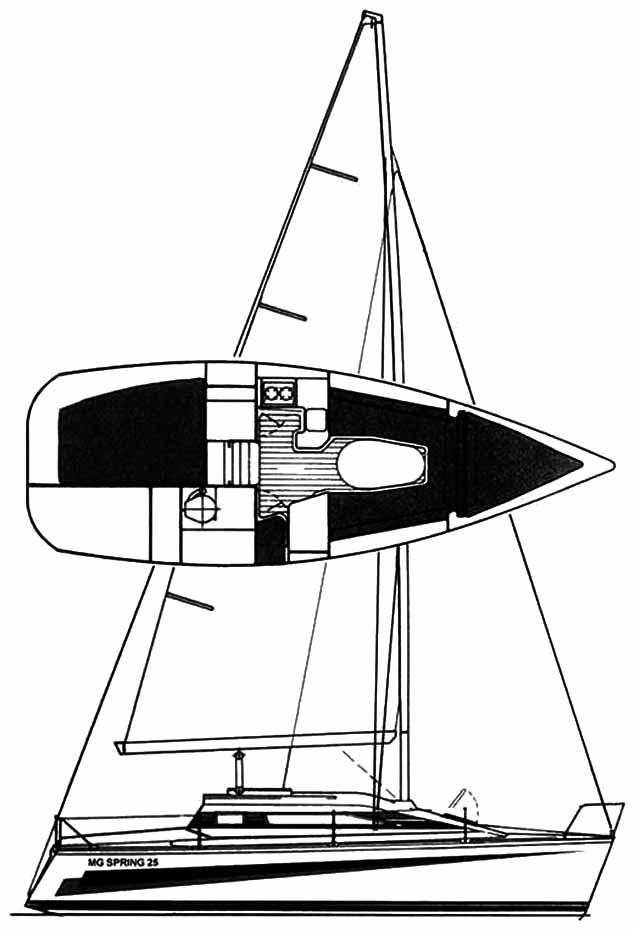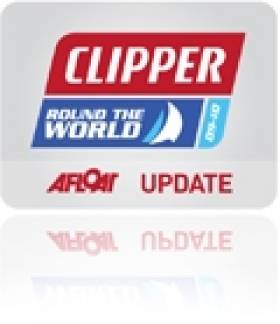Displaying items by tag: Tony Castro
MG 25 Yacht for Sale From Tony Castro is Still Ahead of The Times
Even today, it’s rarely enough that we can say of some boats for sale on Afloat.ie that she’s “As Seen On TV” writes W M Nixon. Yet in the case of the Tony Castro-designed MG Spring 25, the fame of the silver screen is certainly true, but it’s the least of the claims to being something special
Once upon a time in the late 1980s, there was a TV soap called Howard’s Way based around a boatyard in the south of England which was trying to expand through going into cruiser series production. The MG Spring 25 was created for this project by the innovative Tony Castro, who had first set up in business in Crosshaven after serving his time with Ron Holland.
But while the MG Spring 25 may have been created as the central prop for a TV series, she was so good that she went into proper production in Australia and Brazil as well as the UK. As for Tony Castro, for Irish sailors one of the more enduring Castro creations is the Cork 1720 sportsboat of 1994. And the MG Spring 25 of a few years earlier deserves to be favourably remembered for much more than (or should that be “despite”) her Showbiz connections, as this big-hearted little boat has more clever and sensible ideas in her 25ft length than some of today’s latest designs.

Not least of the good ideas is twin rudders. These are the norm for broad-sterned craft such as the world-beating JPK 10.80 in 2016, yet in 1998 when this particular MG Spring 25 was built, they were stilled looked upon as something very strange.
In creating the design, another temptation was to provide a lifting keel in order to broaden cruising area and trailerability options. But as some owners will ruefully tell you, lifting keels can jam, and on balance it’s best to have as little in the way of moving parts in the keel department as possible. So Tony Castro cleverly got round the shoal draft requirement by providing a wing keel which does the business of a deeper keel, yet does it with just 3ft draft, and as a bonus the boat can dry out standing upright.
Yet despite the underwater accoutrements, she has a good performance, she has full standing headroom, and if you really pushed it, she can sleep six which makes her an ideal family cruiser. At €12,000, this MG Spring 25 is definitely well worth a visit to Lough Erne for a look-see. Full advert here
#1720 – The 1720 Sportboat 'Heroes and Villains' shot this onboard video of some high speed sailing in Cork harbour yesterday. According to the sailors, they reached a top speed of 20.3 knots in the Tony Castro designed sportsboat in wind speeds of 28–knots gusting to 35! Nice gybe!
This year the resurgent class hosts its National Championships at Baltimore Sailing Club from 18-20 June and its European Championships at Royal Cork Yacht Club from 3-5 September.
Tony Castro 3/4 Tonner is New on Afloat Boats for Sale
#BOATS FOR SALE – New to our Boats for Sale site is this Tony Castro 3/4 Tonner. "Strictly Business" is a one off Tony Castro 3/4 Ton design. She was built in 1988 and named "Bateleur 88" and was successfully campaigned by her then owner Chris Bonnar. Click here for the full listing including images and full spec and extras.
Our Boats for Sale website has been updated. We've listened to the needs of you, the buyers and sellers to bring you the site Ireland needs for boat trading.
Firstly, our aim is to generate Ireland's largest stock of quality boats for sale, in order to do this we've introduced a modest charge of €10 to list your boat for 60 days. We've simplified the steps involved to advertise your boat, and once you've walked through them here are some of the advantages your boat has to gain maximum exposure...
- Our aim is to offer Ireland's largest range of quality boats for sale.
- With upwards of 3,000 visitors per day and 70% of traffic from search engine queries, Afloat.ie is the number one boating portal site in Ireland.
- Your boat will be added to Ireland's largest boating mailing list with over 10,000 subscribers, giving your boat more exposure both at home and abroad
- There's tips too for buyers and sellers covering choosing a boat, asessing value, financing a boat, advertising a boat for sale and the necessary paperwork.
- Our aim is to provide an independent quality alternative where Irish boat buyer can meet Irish boat seller at a cost-effective price.
Sailing legend Sir Robin Knox-Johnston has announced a brand new fleet of 70-foot racers for the Clipper Round the World Yacht Race.
Top naval architect Tony Castro has been commissioned to design the Clipper 70 fleet that will compete in the race from 2013 onwards.
The new yachts, to be built in China and fitted out by international suppliers, will have an increased crew capacity of 22, and feature a new hull design optimised for performance that should see speeds increase to more than 30 knots in the right conditions.
Other features include twin helms, twin rudders and a six-food bowsprit which will allow for the use of a huge Code Zero sail to complement the Yankee headsails, staysail and mainsail.
The Clipper Round the World Yacht Race is open people from all walks of life regardless of previous sailing experience.
In its 15-year history the race "has changed people’s lives and turned almost 3,000 sailing novices into experienced ocean racers", according to Knox-Johnston.
Clipper Ventures chief excective William Ward added: "Crew places on the last race sold out well in advance and Clipper 11-12 is set to do the same. We will therefore be using the 2011 London International Boat Show to launch our crew recruitment drive for Clipper 13-14 and beyond.”
The Clipper 11-12 race - the last to feature the Clipper 68 sailing the 40,000-mile (64,000 km) round-the-world course - will commence this August.


























































